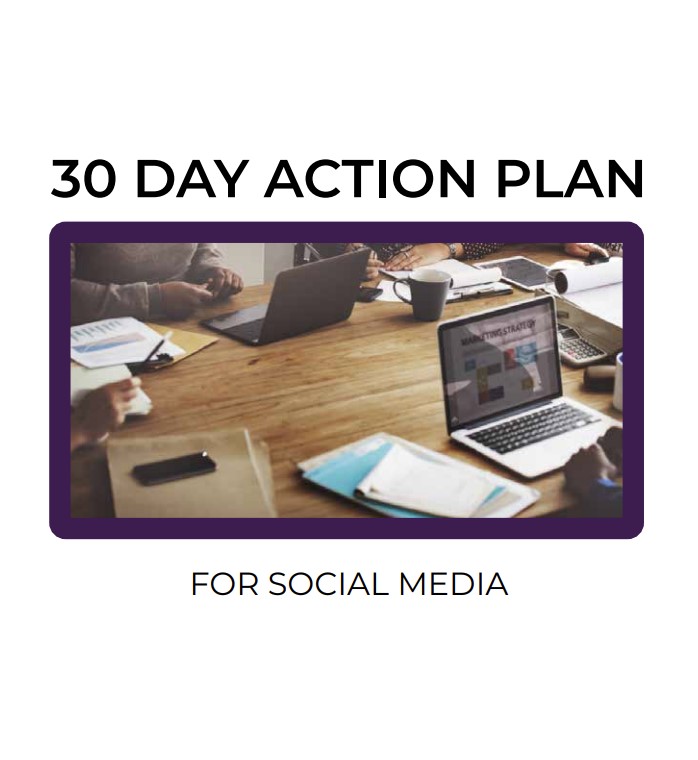
The Ultimate Guide to Content Marketing in 2024
Delivering valuable content seamlessly to your customers and audience with content marketing ensures a natural and non-disruptive connection. A content marketing strategy focuses on attraction, engagement, and delight, enhances conversions, boosts brand awareness and revenue, and establishes industry leadership. Whether formulating a new strategy or refreshing an existing one, this guide offers insights into content marketing types and effective strategy development.
Content Marketing
Content marketing is a straightforward concept: it involves the intentional publication of written and visual material online to attract more leads to your business. This encompasses various forms, such as blog posts, pages, downloads, infographics, videos, and more.
However, content marketing goes beyond merely putting out content and hoping for discovery. It revolves around purposefully tailoring your pages, videos, downloads, and posts to resonate with your target audience, facilitating inbound attraction rather than relying on outbound methods.
In today’s landscape, outbound marketing strategies, which entail interrupting your audience, have diminished in effectiveness for resonating with and converting audience members.
Modern content must seamlessly reach your audience in a natural, inbound manner. A popular approach involves creating a narrative for your content, effectively telling a story. This strategy adds authenticity, engagement, and a personalized touch to your content.
In essence, what characterizes content marketing?
What is content marketing?
Content marketing is the process of planning, creating, distributing, sharing, and publishing content via channels such as social media, blogs, websites, podcasts, apps, press releases, print publications, and more. The goal is to reach your target audience and increase brand awareness, sales, engagement, and loyalty.
What makes content marketing significant?
According to 2024 HubSpot research, Nearly 40% of marketers say content marketing is a very important part of their overall marketing strategy.
The importance of content marketing lies in its ability to:
1. Educate leads and prospects about your products and services. As per 2023 HubSpot research, 29% of marketers leverage blogs or websites for lead attraction and conversion.
2. Boost conversions.
3. Foster relationships between your customers and business, resulting in increased loyalty. Notably, 30% of marketers focus on creating content that reflects brand values.
4. Demonstrate how your products and services effectively address the challenges faced by your audience.
5. Create a sense of community around your brand.
Content marketing holds value because it:
– Educate leads and prospects about your products and services. According to 2023 HubSpot research, 29% of marketers utilize blogs or websites for lead attraction and conversion.
– Boosts conversions.
– Builds relationships between your customers and business, leading to increased loyalty. Notably, 30% of marketers focus on creating content that reflects brand values.
– Demonstrates how your products and services effectively address the challenges faced by your audience.
– Creates a sense of community around your brand.
Now, let’s delve into the diverse types of content marketing.
Types of Content Marketing
Your strategy can incorporate various types of content marketing, and here are some commonly employed ones:
1. Online Content Marketing
Referring to any material published online, specifically focusing on web pages. An effective online content marketing strategy enhances your visibility in search engine results pages (SERPs), ensuring your content reaches the right audience at the right time.
2. Social Media Content Marketing
With over 4.5 billion global social media users, businesses invest heavily in social media marketing. Platforms like Facebook, Instagram, Pinterest, LinkedIn, and Snapchat offer diverse ways to create and share content, including photos, live videos, pre-recorded videos, and stories.
3. Infographic Content Marketing
Infographics present information in a visually understandable format, combining simple wording, short statements, and clear images. They are effective for simplifying educational or complex topics, making them accessible to a broad audience.
4. Blog Content Marketing
A powerful type of inbound content, blogs provide creative freedom in terms of purpose and topic. Blogs facilitate the promotion of internal and external content, incorporation of social share buttons, and inclusion of product information.
5. Podcast Content Marketing
With over 60 million podcast listeners on platforms like Spotify and Apple Podcasts, businesses, and media outlets are increasingly creating and sharing podcasts. Offering creative flexibility, podcasts cover various topics, and decisions such as episode cadence, participants, advertising locations, and episode duration are at the creator’s discretion.
6. Video Content Marketing
Today, more than ever, consumers prefer learning about a brand’s product or service through video. Video marketing not only enhances conversions and ROI but also builds relationships with the audience. Share video content on social media platforms, landing pages, or co-marketing partner websites.
7. Paid Ad Content Marketing
Paid ads are instrumental in reaching a broad audience and strategically positioning your brand. Particularly effective when paired with inbound marketing, paid ads can be shared on various platforms, including social media, landing pages, banners, and sponsored content.
Let’s explore how content marketing works.
Top of the Funnel (TOFU)
The top of the funnel initiates the customer journey and aims to create awareness through your content. Your target audience may recognize a problem but be uncertain about the solution. Here, the focus is on brand awareness, addressing broad pain points, and answering common questions.
TOFU content is designed to draw potential customers in, helping them comprehend a specific problem and providing a relevant opportunity to introduce your solution.
Common challenges for TOFU content involve managing competition, finding the right balance between educational and promotional content, and tracking ROI.
To tackle these challenges, develop a content strategy tailored to a specific audience, aligning content topics and formats with business goals. Create a list of KPIs to monitor and evaluate your content’s performance.
Useful content types at the top of the funnel include:
– Blog posts
– Social media posts
– Short-form videos
– Podcasts
– Infographics
– Checklists
– Ebooks
– Webinars
– Video Ads
Middle of the Funnel (MOFU)
As prospects progress to the middle of the funnel, they are actively considering your product. They may have revisited your site, engaged with your social media, or signed up for your email newsletter.
MOFU content’s goal is to build a relationship with the prospect. At this stage, they understand their problem and are evaluating potential solutions. Your content should educate them on the specifics of your solution and demonstrate how it addresses their unique needs.
This phase is crucial for building trust, and while a prospect may not be ready to make a purchase, it’s essential to avoid making assumptions or pushing for a quick conversion. Instead, provide in-depth information and value to nurture your lead.
Great middle-of-funnel content types include:
– Email newsletters
– Product demos
– Landing pages
– White papers
– Case studies
– Longer-form videos
– Blog posts
– Interactive content
– Webinars
Social media is not exclusive to the top of the funnel; it plays a vital role in customer service and support. Therefore, create MOFU social posts to let prospects know you’re ready to assist on this channel.
Bottom of the Funnel (BOFU)
Bottom-of-funnel content guides prospects toward a decision and, ideally, conversion. This stage focuses on facilitating the conversion process, making it easy for prospects to test a product, understand pricing, and make a purchase. Content at this stage should drive action, create a sense of urgency, and address common objections that might impact sales.
Personalization enhances the impact of your content at this stage, and crafting compelling CTAs is crucial.
Bottom-of-funnel content types include:
– Personalized emails
– User-generated content, such as customer testimonials
– Case studies
– Pricing pages
– Competitor comparison blog posts
– Video demos
– White papers
– Remarketing campaigns
Are you ready to get started and need a little support with your content marketing? Reach out to us, and let’s chat!
Ready for more?
KMD Wisdom + Wellness is the place to share resources and actionable tips for SEO, website design, event marketing, social media, and more – elevate your marketing well.
If this resonates and you’d like to receive monthly bits of wisdom mixed with wellness ideas to elevate each day in both your personal + professional life, let’s be friends. Subscribe here.








